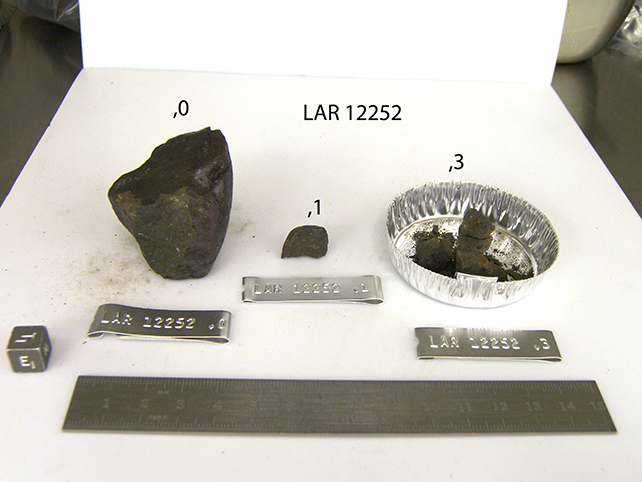Given the seeming paucity of moisture in the leftover remains of Earth's building blocks, planetary scientists have long assumed our planet's water supply came after it formed in a rain of hydrogen-soaked rocks and comets.
A new study by researchers from the University of Oxford and the UK's national synchrotron science facility challenges the theory that water arrived via special delivery. In fact, water may have been part of Earth's makeup all along.
The study examines rare meteorites known as enstatite chondrites (ECs), which are thought to be similar in composition to the rocks that our planet was originally built with.
Using a technique called X-Ray Absorption Near Edge Structure (XANES) spectroscopy, which essentially uses X-rays to chemically 'fingerprint' materials, the team found enough hydrogen to suggest oceans may have formed on Earth without any extra provisions.

That hydrogen could have combined with the oxygen also embedded in the rocks of early Earth. All the ingredients were in place some 4.55 billion years ago, in other words, first for water, and then for life itself.
"We now think that the material that built our planet – which we can study using these rare meteorites – was far richer in hydrogen than we thought previously," says University of Oxford Earth scientist James Bryson.
"This finding supports the idea that the formation of water on Earth was a natural process, rather than a fluke of hydrated asteroids bombarding our planet after it formed."
Of significance was the hydrogen's location within the samples, with concentrations of the element being found within pristine material inside the meteorites but not attached to parts of the rock that could be affected by outside contamination.
The researchers propose that hydrogen gas may have reacted with the iron sulfide mineral pyrrhotite in these rocks, essentially preventing the hydrogen from being lost and locking it in until the conditions were right for water formation.
"We were incredibly excited when the analysis told us the sample contained hydrogen sulfide – just not where we expected," says Earth scientist Thomas Barrett, from the University of Oxford.
"Because the likelihood of this hydrogen sulfide originating from terrestrial contamination is very low, this research provides vital evidence to support the theory that water on Earth is native – that it is a natural outcome of what our planet is made of."
This idea isn't a completely new one, and the researchers reference a 2020 study which also found hydrogen locked inside ECs. However, there was still some uncertainty over whether the hydrogen was native to these meteorites.
The new and more thorough analysis appears to confirm that these ECs – and presumably the rocks that Earth was formed from – do indeed come with built-in hydrogen, and enough of it for our planet to evolve into the blue marble it is today.
"A fundamental question for planetary scientists is how Earth came to look like it does today," says Bryson.
The research has been published in Icarus.
